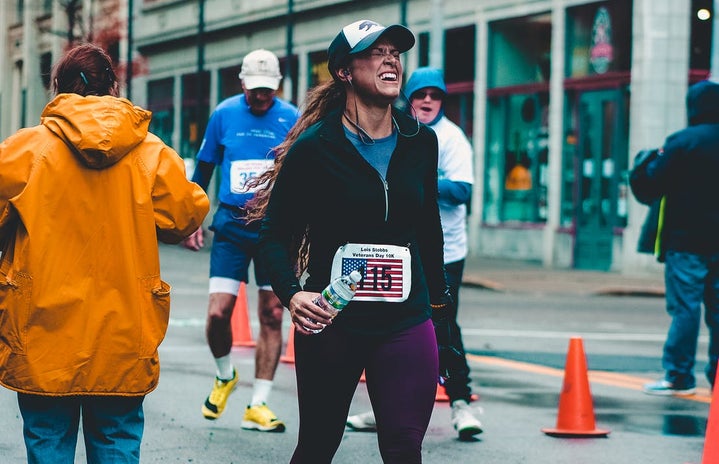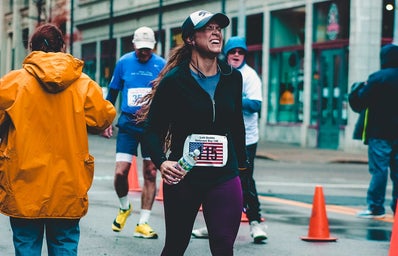As the world has headed into 5th month since the outbreak of the novel Coronavirus, it almost feels as if we are living in the whole different chapter of 2020 than when people across the world went crazy about attempting to recreate dalgona coffee, posting pictures of handmade banana bread and debating whether Tiger King‘s Carole Baskin was to be blamed for an unsolved potential criminal case that left her husband missing or deceased. Following the preventative measures implemented to contain the spread of the virus, people from all walks of life have been requested to spend more time indoors, leaving people wondering how to keep them safe and sane amid the unprecedented health crisis. I for one was navigating my way through the abrupt end of my study abroad, figuring out how to get adjusted to the fully remote instruction which took place past midnight in Japan.
Upon returning to Japan from California, where leggings and yoga mats are deeply ingrained into its scenery, I swore to myself to get rid of a couple of pounds I gained over the course of my stay in the US. Being a daughter of two full marathon runners, and with the State of Emergency being declared by the head of Tokyo, there seemed like no option left for me but to go jogging to commit to the promise I made with myself. What has stared as my weight loss journey turned out to become a part of my daily routine that would help me stay physically fit and mentally sane. Despite all the benefits that running would offer us, unfortunately, female joggers still remaine less visible in public spaces, at least in my neighborhood in Tokyo.
As rewarding and refreshing it can be, female joggers are often reminded that running outdoors might be a form of exercise that is not afforded to everyone and could be immensely gendered. Throughout my effort to get back on the right track to maintain my physical health by running five miles every other day, I came to realize that male joggers make up approximately 95% of the runners that I would cross paths with. Beyond the disproportionate demographic of outdoor runners in Tokyo, an overwhelmingly large number of women dress in sportswear that covers their skin and body shape, despite the heatwave that has currently been hitting Japan. Male joggers, on the other hand, seem to be enjoying the privilege of wearing skin revealing running garments that allow them to get exposed to the cool breeze. Yoga pants and tank tops often marketed towards women by countless sports brands such as Lululemon and Nike, are nowhere to be seen. Despite the growing appetite for wellness and fitness among women rising in Tokyo, the invisibility of female joggers in public spaces sends me a message that outdoor fitness activities are not meant for women. But is that how jogging supposed to be? Are women supposed to be kept indoors while keeping themselves physically and mentally healthy?
The absence of female runners in residential neighborhoods could be attributed to numerous facets of Japanese society that, arguably, hold women back from stepping out of the house with their running shoes on. From the alarmingly low male engagement rate for household chores to the growing numbers of women juggling paid work and domestic labor, the aggregated hours that women spend on taking care of their family ultimately would leave no time for them to engage in the fitness journey that men may find easy to attain.
As a female jogger, there needs to be a constant effort to be made to ensure our safety when hitting the street for my daily run. It goes without saying that women are more likely to be subjected to harassment than their male peers due partly to the hypervisibility of them in a public settings where female runners are less present. While women around the world have been sharing how they’d equipped themself with self-defense kits while running outdoors following the egregious killing of a female runner, female joggers in my neighbor seemed to come up with different measures; defeminizing their body. As a Japanese female runner who started my fitness endeavor at a city that has been saturated with fitness garments that would allow people to embrace their body shape, I cannot help but point out the blatant incompatibility of being athletic while unleashing femininity in public spaces in Tokyo.
Even the Gland Slam champion, Naomi Osaka was no exception to this public sentiment. Osaka spoke out against the critique she received directed to a Twitter post with photos of her in a bikini. She called out the negative remarks questioning her dressing in a bikini. Her response read; “I just wanna say it’s creeping me out how many people are commenting @ me to maintain my ‘innocent image’ and ‘don’t try to be someone your not,’” she wrote. “You don’t know me, I’m 22, I wear swimsuits to the pool. Why do you feel like you can comment on what I can wear?”.
With the end of this catastrophic health crisis nowhere to be seen, people are venturing to form habits that provides them with sanity. Whether the pandemic turns into a milestone for the Japanese public to reevaluate the lack of visibility of the female runner still remains to be seen.



